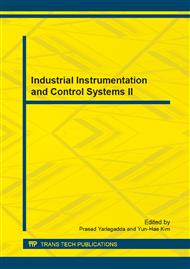p.498
p.506
p.513
p.519
p.523
p.528
p.532
p.536
p.542
Simulation and Design of a Cell-Based Digital Microfluidic Chip for Continuous Monitoring of Acute Toxic Chemicals
Abstract:
In this study, a lab-on-chip (LOC) system is designed for the cell sensors to provide a high-efficient continuous analysis platform of acute toxicants in water environment. The chip is composed of three domains, including counter-flow micromixers, a T-junction droplet generator and time delay channels (TD-Cs). Water sample and bioluminescent bacterium Vibrio Fischeri (VF) are imported into the micromixers before that the droplet generator encapsulates them inside aqueous droplets separated by air. Air flow is the disperse medium, which can guarantee sufficient oxygen supply for the cells in droplets. The system shows high reliability and stability through numerical and experimental investigations.
Info:
Periodical:
Pages:
523-527
Citation:
Online since:
July 2013
Authors:
Price:
Сopyright:
© 2013 Trans Tech Publications Ltd. All Rights Reserved
Share:
Citation:


